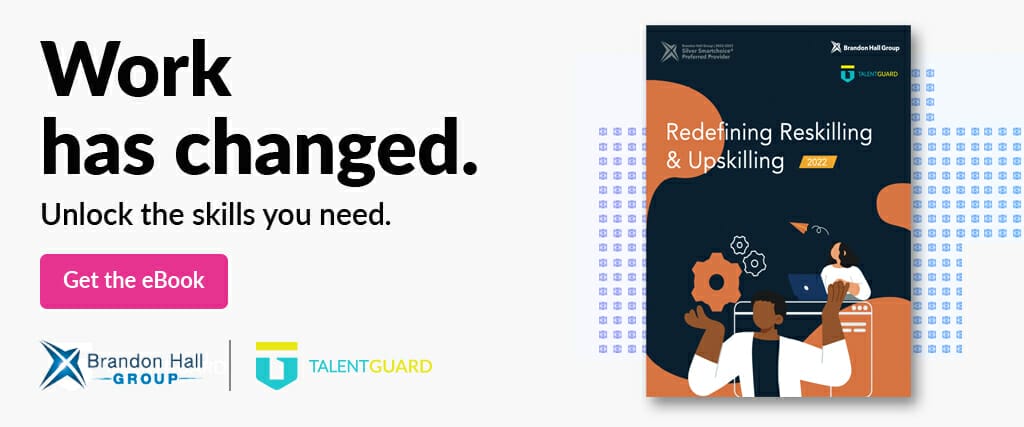Why Is Employee Development Important?

What is employee development? Many people don’t really understand the employee development definition. In essence, employee development is when employees take the time to learn new skills or upskill what they already know. This is done with the help of their employer. Some companies call this professional development.
It is very important for companies to invest in people’s development skills to ensure they are taking a vested interest in getting their employees acclimated to their culture and helping groom them so they can retain their talent and promote from within. More than ever, companies must understand the importance of understanding the skills of their workforce and why it is so crucial to develop them for internal success.
Employee development in HRM is a necessity that cannot be ignored. HR departments that do not value the time and contributions of their employees overlook this. What is employee development in HRM? This is the HR team taking time to create effective onboarding and retention tactics that take place the moment an employee starts at the company. An effective employee development program is one of the best ways to attract, engage, and retain good talent.
Employee development is and should be part of the overall culture of the company. Organizations that don’t place a high priority on employee development tend to have less productivity, their teams remain stagnant, and employees often leave the company for organizations that put their needs and growth first.
To cultivate a culture of effective, productive employees, making their development should be a priority that starts from the top. In fact, all employees should have an employee development plan in place that’s strategically aligned with the company’s goals that will help identify their strengths and weaknesses. This demonstrates the company’s commitment to excellence and provides opportunities for employees to learn and grow.
Employee Development Program
When it comes to the employee development process, there are 4 approaches to employee development. These approaches all contribute to the betterment of the organization and its teams in different ways.
- Formal education
It’s important to understand the importance of staff development in education. Creating an employee development program that has ongoing training modules or allowing employees to finish degrees or get specializations with the company behind them also creates loyal, dedicated employees. - Assessment
This is used to identify employees who may be better suited for a different role, employees who have management potential, figure out weaknesses in areas, and measure the strengths and weaknesses of the current management team. - Job experiences
Employee development ideas can stem from this area because it deals with anything employees face in their current roles. This helps uncover what employees really need to be successful in their roles. This is why it is vital to have an employee development program that includes all employees. - Interpersonal relationships
In this case, mentorships are operative. Employees can benefit from shadowing someone who has experience in a role they aspire to be in, or an executive that can shed light on how to work with others, career paths, etc.
Why Is Employee Development Important?
From the outside, some may wonder why is employee development important, but the importance of employee development cannot be denied. Employees and the organization benefit from having effective development goals and initiatives in place. The purpose of staff development is to improve productivity and efficiency while remaining in compliance with regulations (especially if the roles must follow HIPAA or other federally regulated areas).
Staff development also addresses weaknesses and empowers the team with the confidence to move forward into other roles. This helps with the health and well-being of the team, which usually provides consistency in work and skill sets. There are different types of staff development to consider, such as onboarding, training in soft skills, management, technical skills, safety, and other areas used within the organization.
HRM should have a system in place that specifically outlines the company’s goals on how to invest in employee development. It should include employee development plans, mentorship, independent learning, internal mobility programs, workshops and courses, online training, and more. Employees can benefit from going to association events and having check-ins more frequently. Employers should also invest in a system where employees can track their own information and employee development plans to have a vested interest in their elevation.
Employee Skill Development
The HR department should place a high priority on employee skill development. The process of staff development does not have to be rigid, but there should be a formula in place to accommodate all employees. How would an HR department employ different types of employee development?
First, the HR department must understand how to develop employees’ skills. There are a few methods to consider when developing a viable plan. This includes training through a series of methods which includes formal and informal options based on the needs of the organization and the employee.
Another good way to contribute to employee skill development is through job rotations or cross-training, where employees get to work with other teams to see how they operate. This can help determine where the employee wants to upskill for the future. Then, there is mentoring. Mentoring can be beneficial for junior employees because they are exposed to the duties and responsibilities of the senior management team.
Simulations are also a good way to gain new skills. Role-playing in team meetings can help in applying the knowledge and skills learned in a training session, exposing it to a real-time environment. 360-degree performance reviews are also growing in popularity, so employees can get feedback from their supervisors, peers, subordinates, and in some cases, external vendors.
Employee Development Strategy
There are many ways to develop an employee development strategy. A good rule of thumb is to look at existing employee development models and see how some of those practices can be extracted for the company’s employee development methods.
With so many employee development strategies available, using AI for skills management and auto-populating recommended learnings is highly recommended when evaluating the system. What are approaches for employee development in quality and safety?
When it comes to quality and safety, the most important thing is that employees understand your risk management policies and safety standards. This ensures everyone is on the same page within the organization and has a vested interest in the quality of your products and services while protecting your infrastructure.
Using the right training tools makes a difference when crafting the program is key. An LMS, OSHA resources, and workforce management systems all work to help solidify the company’s commitment to employee development. Also, conducting a skills gap analysis to identify what the team needs, and then getting granular for the employee helps support the push to enhance skills and competencies. Finally, considering a learning management program where employees can find additional resources that may surpass their original development goals can be leveraged for more opportunities.
Benefits of Employee Development
What are the benefits of employee development? There are many benefits of employee development and training, including increased engagement, retention, increased employee satisfaction, higher productivity, and more. Employee development also helps in solving the skills shortage and promotes employees from within.
Researching training and development articles and understanding how to train and develop employees is beneficial for any organization truly invested in its teams. Once the HR team makes a concerted effort to find out what are approaches for employee development in quality and safety, it makes a difference in how the employees react and participate in their development.
All it takes is an organization that understands how having an employee development program helps them by attracting great talent, improving morale, boosting confidence, unlocking creativity, and creating a culture where employees are goal-oriented. With this type of engaged program, they are destined for success.
Learn more about employee development
Mastering Skills Tracking: The Key to Workforce Agility
Mastering skills tracking is essential for staying ahead of market changes, as it enables organizations to effectively manage, develop, and monitor employee skills. This systematic process of tracking and managing workforce capabilities has become a cornerstone for building an agile, future-ready organization. For HR professionals new to the field, this guide offers an essential overview […]
Building a Culture of Learning in the Workplace
Building a culture of learning is essential in today’s workforce, where learning new skills plays a pivotal role for both employees and organizations. As industries constantly evolve and technology advances, staying updated with relevant skills is crucial. A recent Gallup and Workhuman study revealed that 60% of workers who recently learned a new skill did […]
Impact of Skills Alignment on Employee Motivation
The impact of skills alignment goes beyond being a buzzword for HR teams—it transforms how employees apply their unique skills and strengths to meet role expectations. When companies get this right, the experience for both the employee and the company improves. But when things are out of sync, it can slowly erode motivation and morale, […]




